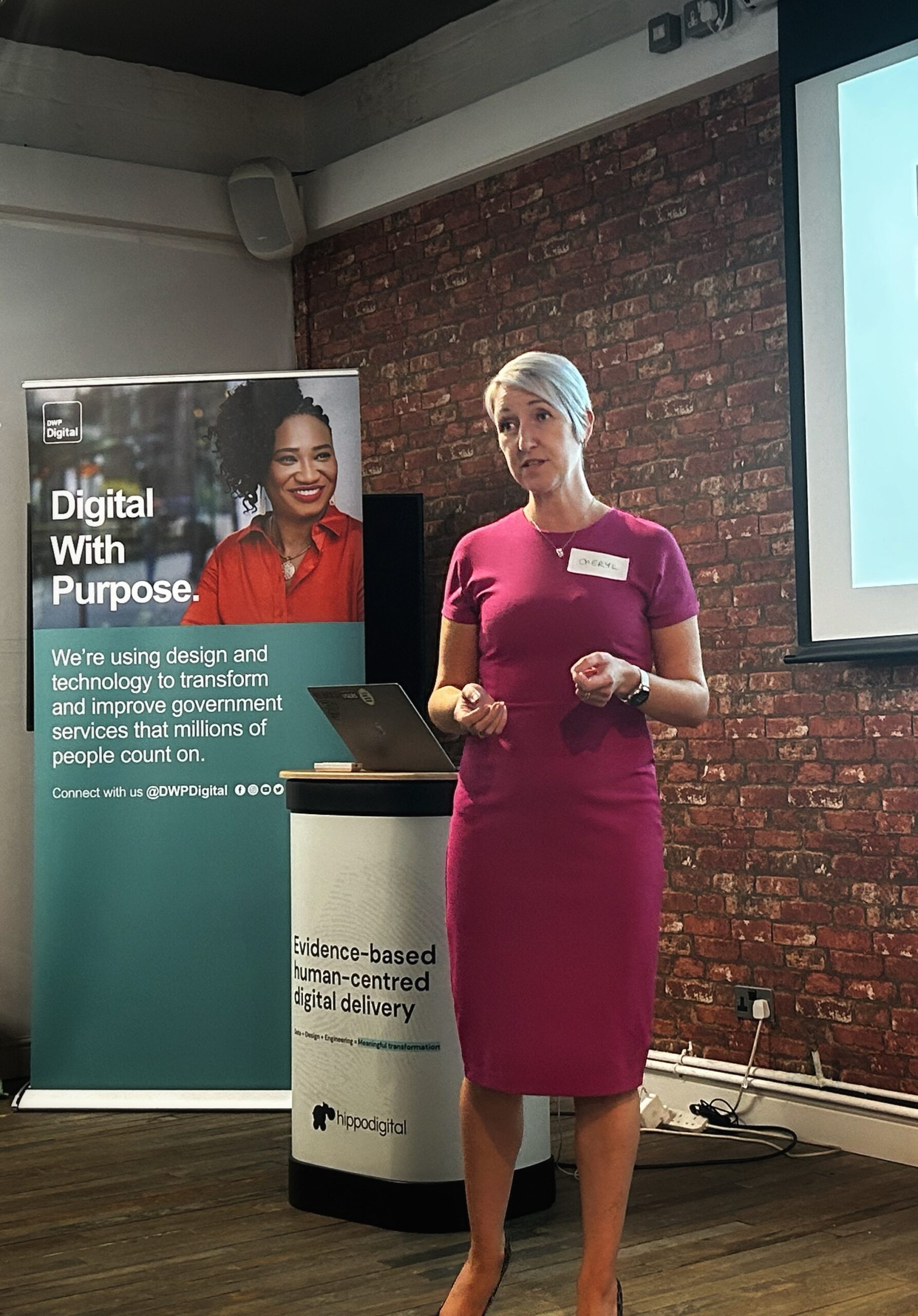This week is @DWPDigtials Product Mindset week; with some fantastic sessions and Digital Showcases on the work DWP have been doing to deliver Products that add value for users; with sessions covering things like storytelling, Design thinking, Product Management, Prioritisation and how we should be using data to help decision making, etc.

The resounding message throughout the event has been the importance of looking wider than digital when thinking about Products and User Centred Design. DWP, like many other Departments, has a large operational function; and it recognises the need to think across channels in order to deliver joined up services; which is great. But be it digital or operational delivery; everything starts with the Policy.
Sadly in today’s User Centred world there’s a disconnect between policy and product delivery. By the time Product delivery teams get involved, policy colleagues have already spent a lot of time and effort investigating policy initiatives, and when delivery teams then start talking about doing Discoveries to understand User Needs, it’s understandable that Policy folks can feel like the time and effort they have been put in is being duplicated or wasted. This becomes even more of a challenge when the user centred design findings fundamental disagree with the policy.
Many (many) years ago I faced exactly this challenge; the Minister had stood up in the house and made a commitment to deliver a new digital support service using VR. Policy had spent months carrying out round table discussions with charities, business groups etc; drafting a white paper; all that jazz to get the policy signed off. When the initiative came to my teams to deliver it quickly became clear there was a fundamental issue; users didn’t want it and couldn’t see how or why they would use it.
We went through the long process over a couple of months to gather the evidence to demonstrate why; from both a technical solution and user centred point of view; this product wouldn’t add value the Minister thought. Weeks of bun fights with policy who wanted the product they had spent months of time developing the policy for; and delivery didn’t want to spend months of time and thousands of pounds on a service that wouldn’t work.
Eventually we were able to demonstrate there was a quicker, cheaper and over all better way to meet the users needs; the Minister and Policy wasn’t wrong about the fact there was a need that needed solving; the issue was the solution they had identified; without understanding the technology available at the time and how this could be used to meet user needs.
And this highlights the key issue; if we write policy with a solution already in mind, we’re stifling our ability to be innovative and develop products based on user needs. Policy is often complex; but the key tenant of the Product Mindset is starting with the simplest thing, proving it meets user needs and building from there; and this conflicting approach impacts our ability to deliver real value.
What’s interesting about this challenge is that it’s one the public sector has been trying to address for over 10 years; lots of conversations have been had and effort has been made to make multidisciplinary teams truly multidisciplinary, brining in Policy SME’s to the delivery teams; and in the early days of digital in Gov, most Product Mangers I worked with came from Policy backgrounds.
The problem is that by the time it hits the delivery teams; it’s too late. Rather than bringing Policy into Product delivery, we need to be bringing Product (and UCD) thinking into Policy.
Lots of departments have been trying different approaches to tackle this issue. DWP itself has done a lot of work in this space; Universal Credit as a key example of how bringing product and policy together can add value; allowing us to identify and tackle policy issues in a realistic tangible way based on user needs.
And how we understand those User Needs is a key part of the difference, and why bringing policy and product together is vital. Policy looks at User Needs at the generic, Marco level; Product (and UCD) from the micro, individual level. Working together to understand users needs; tell their stories and why delivering this initiative will make a difference, can help us all deliver better policy outcomes that solve real problems users are facing and make our society better.
We need to be asking questions about how we bring that Product Mindset into the lifecycle of Product delivery from the start; not when we start building a digital solution, but when we start considering a policy initiative. How we ensure that our Product Mindset spans Policy, Digital, Operations and everything in between. How we break down those silos and embrace true multidisciplinary approaches to solving problems and why it’s important to take a Product Mindset approach to ensure we deliver value.
This is what DWP’s Product Mindset week is all about; and while it may not have all the answers; it offers lots of food for thought; discussions and things for all of us working in this space to consider; and I want to thank Fay, Alison and the team at DWP for organising the events this week and making sure these discussions are happening in order to move all of us who work in this space forward together.
